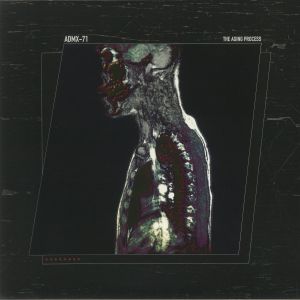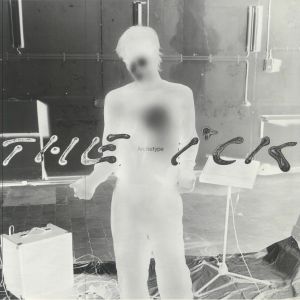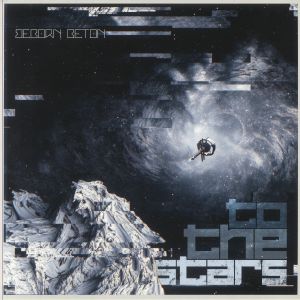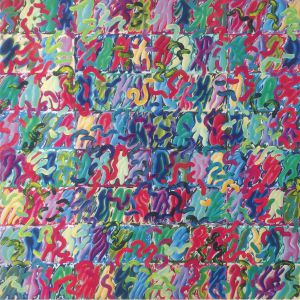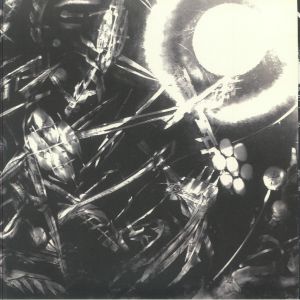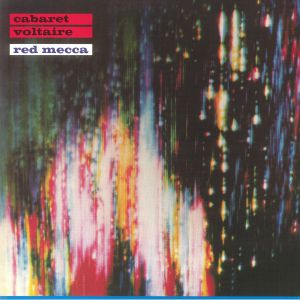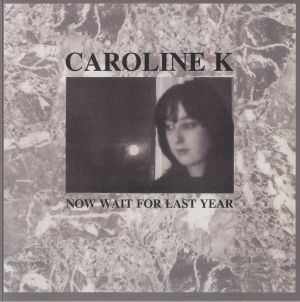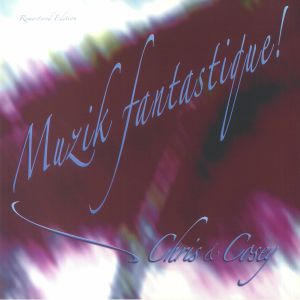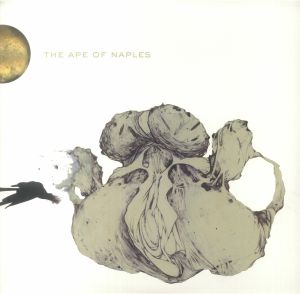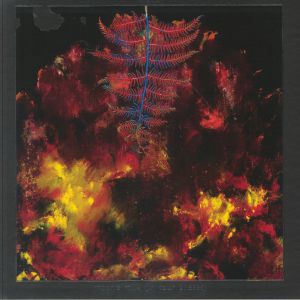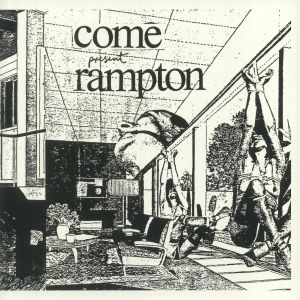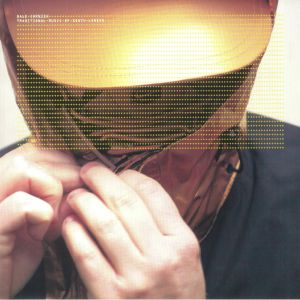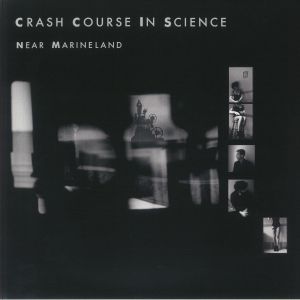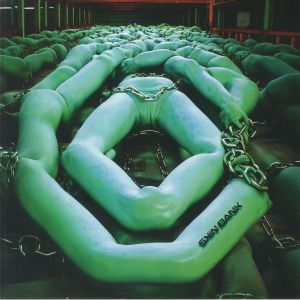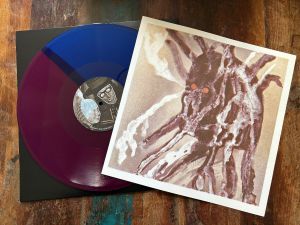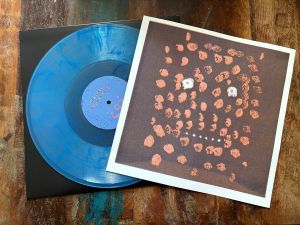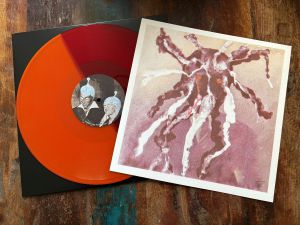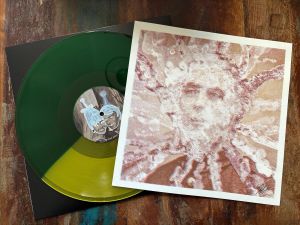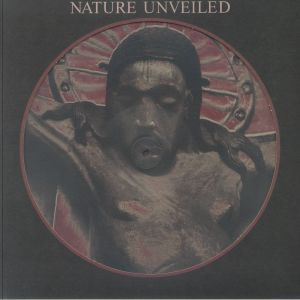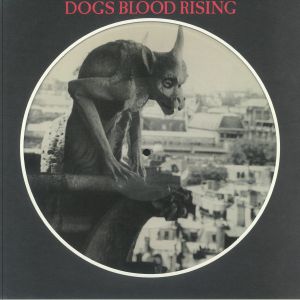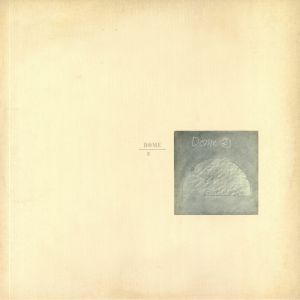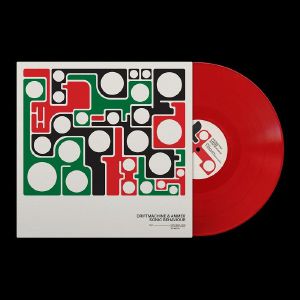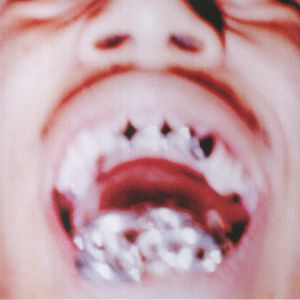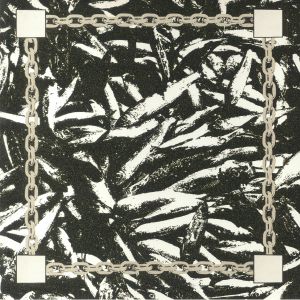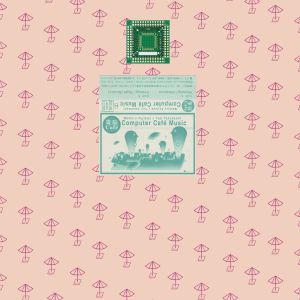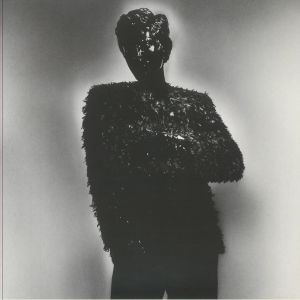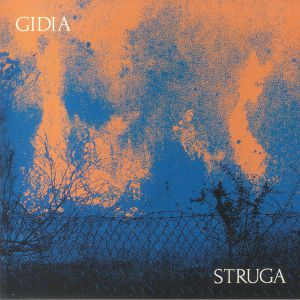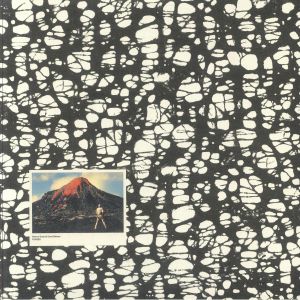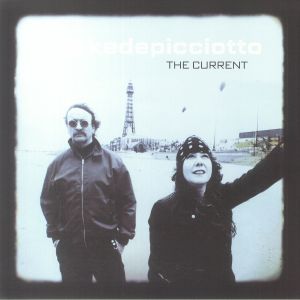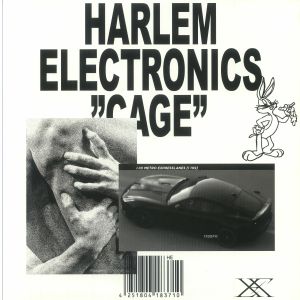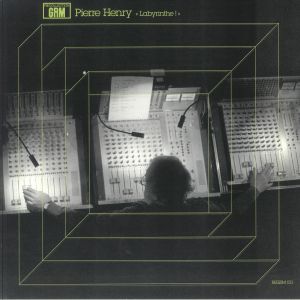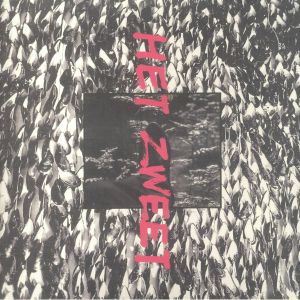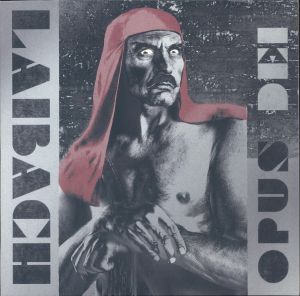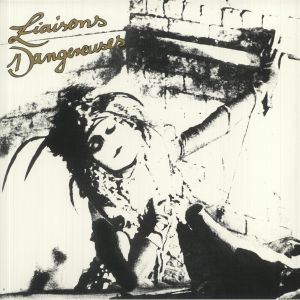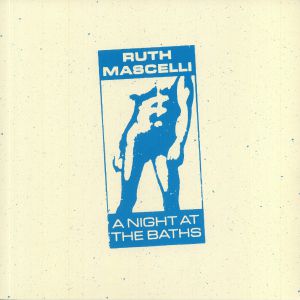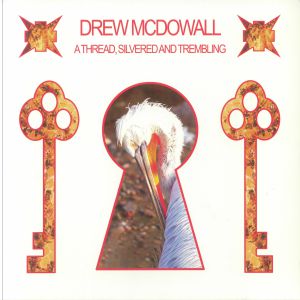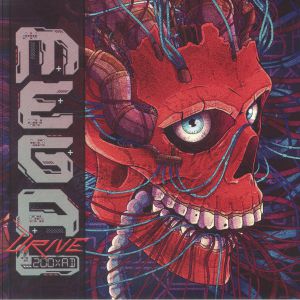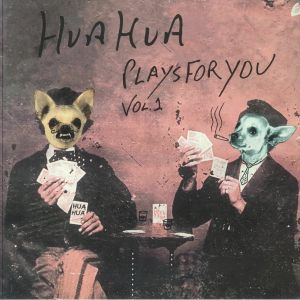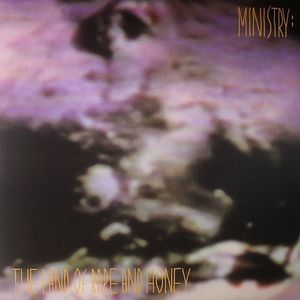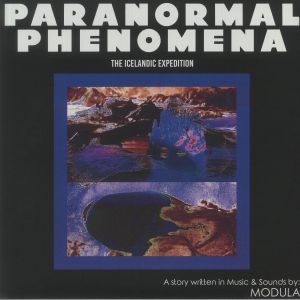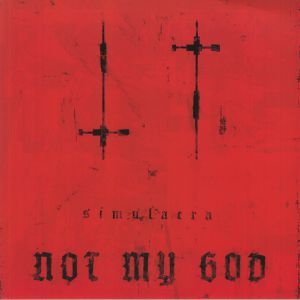Filter
Stock
Type
Music
Format
Featured
Release Title
Price
Back catalogue: Industrial/Noise
Juno's full catalogue of Industrial/Noise
Albums
Review: New York City techno veteran Adam X returns to Long Island Electrical Systems under the ADMX71 alias, where he once again explores the outer fringes of experimental electronics on his latest LP The Aging Process, existing at the intersection of industrial, EBM and techno. Beginning with the contorted noise soundscape of 'Speaking Via Telepathy' he soon unleashes the seething brain bash of 'Sensor-Tised' followed by the strobing tunnel vision of 'Walking Through Walls'. Elsewhere, there's more dystopian themes aplenty as heard on the static TBM pulse of 'They've Instilled Fear In Us', or the pitch black war funk of 'Leading The Way' and the muscular slow burner 'Leading The Way'.
… Read morePlayed by: Wes Baggaley, Juno Recommends Electro
in stock $29.86
The Castle II (gatefold 2xLP in embossed sleeve)
Cat: MEC 055. Rel: 19 Feb 24
Review: Who, or perhaps what, was Tomo Akikawabaya? In truth, nobody really seems to sure on the answer, other than the fact this mysterious Japanese artists decided to release a serious of incredible synth-driven singles during the 1980s, before vanishing back into the dry ice of whatever smoke machine they escaped from. A musical genie, here only to bestow a limited number of gems on us, and then disappear forever. Swerving interviews and photos doesn't help the search, but The Castle II at least allows us to explore his work in depth, across several tracks. These range from the twisted cabaret weirds of 'Objet D'Amour', to the driving electro-punk of 'Le Voleur', grand and decidedly 1980s-sounding synth rock on 'The April', and New Romantic-esque pop on The Castle (II). Essential stuff.
… Read morePlayed by: Juno Recommends Experimental
in stock $39.82
Played by: Alexis Le-Tan
in stock $25.18
Played by: Wes Baggaley
in stock $24.62
To The Stars (limited "deep space" sparkle vinyl LP)
Cat: 884388 882201. Rel: 25 Nov 24
Played by: Rave Energy
in stock $31.82
Cat: UF 055. Rel: 26 Jun 23
Review: We're starved for two-sided 12"s in the world of ambient music, but Chris Madak aka. Bee Mask has refreshingly graced us with one this week. It should be said that there's Skee Mask and then there's Bee Mask; the latter is far more unsung, undeservingly so. Madak's music is abstract and cerebral enough to have lent him credo enough to have released on the likes of Weird Forest, Spectrum Spools and Room40. But this latest reissue, 'Versailles Is Not Too Large Or Infinity Too Long', hears him plunge the ethereal heights for the US label Unifactor. Originally released on cassette on Chondritic Sound in 2008, these pieces deserve the renewed attention and the fresh laying to wax, since they're not 'regular ole' ambient cuts in the slightest. Unafraid of indulging the high end freqs, Bee Mask fleshes out a mood of uncertain, urgent bliss - sizzling, crunching and soaring the drone, as if its maker were a modern Icarus flying too close to the sun.
… Read morePlayed by: Juno Recommends Ambient/Drone
in stock $14.38
in stock $35.36
Suburban Hunting (limited heavyweight coloured splattered vinyl 2xLP)
Cat: CITI 018. Rel: 23 Nov 15
Review: It's been a delight to see Oliver Ho's Broken English Club project develop artistically over recent times, with some fine records for Jealous God and Veronica Vasicka's Cititrax label along the way. Suburban Hunting sees Ho deliver his debut Broken English Club album, featuring some 11 tracks of primitive electronics and cinematic pseudo techno cuts. Tunes like "Vacant", "Derelict", or "Scum" all share a loose techno framework, but the real aesthetic is much vaster than that, verging on remnants of post-punk, industrial and all that goodness and hybrid class that came out of the late 1980's. It's another fine addition to the sublime Cititrax discography, and we recommended it just as much as the previous numbers.
… Read more in stock $34.58
Machine (gatefold red black & white splattered vinyl 2xLP)
Cat: 781676 75791. Rel: 03 Oct 24
Review: Kevin Richard Martin, known for pushing the boundaries of sound as THE BUG, unleashes his latest full-length, Machine. The album, released via Relapse, is his first solo instrumental work under the moniker, following a series of self-released EPs on PRESSURE. Each track is a sonic barrage, merging futuristic dub with crushing electronic elements, heavy bass riffs, and industrial weight that recalls his earlier work with Techno Animal and King Midas Sound. Machine takes the listener on a journey through dense, dystopian soundscapes, where each beat feels like a seismic event, making it perfect for oversized systems in sweat-drenched clubs. Tracks like 'Buried' and 'Bodied' epitomise this, with the former dropping tectonic bass lines over heavyweight beats, while the latter smoulders with industrial doom. Martin's signature "ice cold and dystopian" sound is at its zenith here, blending visceral sub-bass pressure with masterful production. It's a brutal yet nuanced record, one that demands to be felt as much as heard.
… Read morePlayed by: Wes Baggaley
in stock $29.32
Juhrop (A Klingon Opera) (hand-numbered 2xLP box set + booklet + insert in die-cut box limited to 250 copies)
Cat: YOUDO 08. Rel: 07 Apr 25
Played by: Juno Recommends Experimental
in stock $48.68
in stock $19.64
Cat: MNQ 159LP. Rel: 11 Jul 24
Review: This enigmatic recording, ahead of its time upon release, features Caroline K's pioneering approach to analog synth music and sample experimentation. Tracks like 'The Happening World' demonstrate her focus on dark ambient and drone music, while 'Animal Lattice' offers a haunting juxtaposition of high and low notes, reminiscent of early Dead Can Dance. 'Between The Spaces' explores a range of atmospheres, from new age to dungeon synth, with ethereal undertones. Caroline K's use of background noises and found sounds adds depth and texture to compositions like 'Leaving,' leaving a lasting impression on listeners. Now Wait For Last Year remains a lasting legacy to Caroline K's innovative spirit and her enduring influence on ambient, dark ambient, and electronic music. This brilliant trip into experimental ambience will impress everyone from soundtrack lovers to those who are into darker electronics.
… Read morePlayed by: Juno Recommends Ambient/Drone
in stock $28.76
Musik Fantastique! (reissue) (pink vinyl LP)
Cat: CTIMF 22. Rel: 23 Mar 23
Review: This version of Chris & Cosey's Musik Fantastique! is a reissue of their original 1992 album, which features a mix of new wave, post-punk, and electronic influences to produce a slick slew of dreamy melody and threnody. Chris & Cosey's sharp, often confrontational lyrics explore themes of love, politics, and society, on what is otherwise a more centre-field and dreamy album in the pair's overall brutal discography; it's a cherished part of their synthpop / dream pop era from the early 90s.
… Read morePlayed by: Juno Recommends Leftfield
in stock $14.38
Dead Channel Sky (Loser Edition) (gatefold neon pink vinyl 2xLP)
Cat: SP 1575X. Rel: 13 Mar 25
Review: Imagine a world where the pioneers of hip-hop and electro reign supreme, their sounds echoing through the neon-lit streets of a futuristic metropolis. This is the world that Clipping creates, their music a heady blend of gritty beats, razor-sharp rhymes and dystopian soundscapes. 'Dominator' and 'Change the Channel' set the tone with their raw energy and infectious hooks, while 'Run It' and 'Go' showcase the group's lyrical dexterity and knack for crafting intricate rhymes that weave tales of technology, alienation and social unrest. Collaborations with Aesop Rock, Nels Cline and Cartel Madras add further depth and dimension to the album's sonic tapestry, each artist bringing their unique flavour to the mix. Tracks like 'Simple Degradation' and 'Mood Organ' delve into the darker corners of this dystopian world, exploring the anxieties and uncertainties of a future dominated by technology. It's not for the faint of heart, but it is a thrilling ride through a world of futuristic sounds and thought-provoking lyrics.
… Read morePlayed by: Juno Records Staff Picks
in stock $31.54
The Ape Of Naples (Extended Edition) (trifold white vinyl 3xLP)
Cat: IF 111W. Rel: 10 Jan 23
Review: There are echoes of Coil's mid-1980s cult classic album 'Horse Rotorvator' in 'The Ape of Naples' in that it has such a wide variety of sounds and styles. This one first came back in 2005 and is a go-to for fans as it is just a great example of the band's singular sonic world. The album was put together by Peter Christopherson a year after Jhonn Balance's deadly fall and it features re-workings of the live favourites like 'Amethyst Deceivers' and Love Secret's Domain album track 'Teenage Lightning' plus a numb of tunes first meant for the ultimately ill-fated Backwards long player. Grammy-nominated engineer Jessica Thompson has remastered all the originals for this new reissue.
… Read morePlayed by: Juno Recommends Leftfield
in stock $55.32
Moon's Milk (In Four Phases) (reissue) (limited clear-in-red vinyl 3xLP + MP3 download code in slip-case)
Cat: DAIS 188LPC5. Rel: 01 Oct 24
Review: Originally released as a double CD in 2002, Moon's Milk (In Four Phases) is a collection of four EPs Coil issued seasonally in 1998 via their Eskaton imprint. Featuring John Balance, Peter "Sleazy" Christopherson, Drew McDowall, and William Breeze, it was recorded in their Chiswick, London home studio before they relocated to Weston-Super-Mare. This pivotal work has long been considered a high point in Coil's discography, though it was never reissued or pressed on vinyl at the time. Arranged around the equinoxes and solstices, Moon's Milk captures Coil's deep dive into improvisation, ritualistic sound design and mystical atmospheres and stands proud as a testament to their individuality.
… Read morePlayed by: Wes Baggaley
in stock $78.29
Review: RECOMMENDED
Definitely one for the collectors and historians, there's so much to talk about in terms of Rampton's significance you'll have to excuse sparse references to the actual music. Sorry not sorry and all that. First dropped in 1980, this was not only the first release on the cult and highly sought-after Come Organisation label, it was also one of the first pages in the story of William Bennet.
Leaving Essential Logic behind, the Come project stands as a stylistic bridge between the post punk that came before and the electronics that would follow with Whitehouse, and more latterly Cut Hands. It's weird, it's distorted, even today it's fresh and yet wholly retro. This is the sound of experimentation gone right, guitars, synthesisers and ideas colliding in a coherent mess.
… Read moreDefinitely one for the collectors and historians, there's so much to talk about in terms of Rampton's significance you'll have to excuse sparse references to the actual music. Sorry not sorry and all that. First dropped in 1980, this was not only the first release on the cult and highly sought-after Come Organisation label, it was also one of the first pages in the story of William Bennet.
Leaving Essential Logic behind, the Come project stands as a stylistic bridge between the post punk that came before and the electronics that would follow with Whitehouse, and more latterly Cut Hands. It's weird, it's distorted, even today it's fresh and yet wholly retro. This is the sound of experimentation gone right, guitars, synthesisers and ideas colliding in a coherent mess.
in stock $21.30
Played by: Alexis Le-Tan
in stock $28.22
Review: The cult favourite Dark Entries hits 15 in style here and celebrates in the only way it knows how - with more great music. This time it is the legendary synth-punk yahoos Crash Course in Science aka Dale Feliciello, Mallory Yago, and Michael Zodorozny who are in the spotlight. The group formed back in 1979 and set out to make music using toy instruments and kitchen appliances. Their punk-y, aggressive, angular sound soon found a hardcore fan base and gave rise to big tunes like 'Cardboard Lamb' and 'Flying Turns.' In 1981 they recorded Near Marineland, a full-length that never actually saw the light of day but does now and shows the band moving into more diverse and polished territory.
… Read more in stock $22.12
Played by: Juno Recommends Electro
in stock $24.34
Greensleeve Drakon (limited blue & red split coloured vinyl LP + insert)
Cat: DOAR XXXV. Rel: 24 Apr 25
Review: As we hapless reviewers make our way through these five new experimental LPs by Current 93, we cannot help but feel increasing torment and terror at the figures portrayed on the front covers of each record: hand-painted by David Tibet himself (the artist has increasingly indulged such formal solo trend-buckings through his own Cashen's Gap imprint in recent years) they appear like sleep paralytic demons or the ghosts of cancelled English folk yore. All the records are apparently ritually connected to a recent string of live appearances between London and Hastings, and Tibet's penchant for demonologic peerage titles such as GreenSleeve Drakon and Gnostic Sketch - blurring a sense of self-referentiality and occult otherworldliness - leave us bewildered and slack-jawed.
… Read more! low stock $28.50
Dawn Yawns (limited translucent blue marbled vinyl LP + insert)
Cat: DOAR XXXII. Rel: 24 Apr 25
Review: Dawn Yawns is one of five new 12" records released at the same time, documenting one or two - if not more - furtive live sets performed by Current 93 (David Tibet) between London and Hastings in early 2025. On this quintet of new transmissions, dream and daylight are heard in grisly merger, on the back of an umbral awakening from a polar slumber, where the blood moon never sets, known to C93 fans only as the "Menstrual Night". Be warned, however, these eerie recordings have a sure capacity to mark the soul in unprecedented ways.
… Read more in stock $34.30
As Real As Scarecrows (limited red & orange vinyl LP + autographed art print)
Cat: DOAR XXXIII. Rel: 24 Apr 25
Review: English experimental group, Current 93, was founded in 1982 by David Tibet and set out to explore industrial music with abrasive tape loops, droning noises and distorted vocals. As Real As ScareCrows is a haunting new chapter in Tibet's arcane vision, and it was released alongside four other LPs to mark recent Channellings in London and Hastings. Ritualistic and esoteric, the album feels like a spectral transmission or "ScareCrow scaring crows away after Menstrual Night," as Tibet describes it. It's a deeply unsettling and bleakly poetic work that is unmistakably C93 in its mood and mystique. Each copy includes a signed risograph print of Tibet's painting, making it as much an art object as a musical release. A beautifully eerie offering from one of Britain's most enduring and enigmatic cult acts.
… Read more in stock $28.50
May Be Skeletal Rainbow (limited translucent green & yellow split coloured vinyl LP + insert)
Cat: DOAR XXXIV. Rel: 24 Apr 25
Review: Another of five LPs by Current 93 (David Tibet) through his own audio-esoterica label Cashen's Gap, this brilliant yellow and green hued LP nods to the universally recognised colour of earth-ground wire, and comes in the wake of a recent two part set of "channellings" (live performances) in both London and Hastings. As ever, Tibet steers the dream ship through surreal poetics and creaking soundscapes, and offers us a risograph print of his artwork, titled MayBe Skeletal RainBow, or perhaps Building The RainBow PainBow Preparing For Menstrual Night (we're not sure).
… Read more in stock $28.50
Nature Unveiled (reissue) (picture disc LP in die-cut sleeve)
Cat: DOAR XVIII. Rel: 29 Aug 24
Review: The reissue of Current 93's Nature Unveiled brings back an iconic album that first captivated listeners with its avant-garde sound. This album features two striking tracks: 'Ach Golgotha (Maldoror Is Dead)' and 'The Mystical Body Of Christ In Chorazaim (The Great In The Small).' 'Ach Golgotha (Maldoror Is Dead)' stands out as an irreverent celebration of orthodox liturgical rites, inspired by the demon Maldoror, a creation of French poet Lautreamont. This track, with its dark and mystical aura, reflects the early influences on Tibet, including the magician Aleister Crowley. Fans appreciate the eerie and otherworldly appeal of this piece, which retains its power and impact decades later. 'The Mystical Body Of Christ In Chorazaim (The Great In The Small)' complements the first track with its own haunting soundscapes. The album's ability to transport listeners to a realm of fantastic nightmares underscores Current 93's lasting influence in the experimental music scene. Pressed on picture disc, this version is extra special for collectors who look for unique music and packaging.
… Read more in stock $28.22
Dogs Blood Rising (reissue) (picture disc LP in die-cut sleeve)
Cat: DOAR XVI. Rel: 29 Aug 24
Review: Embarking on a series of new Current 93 reissues via his own label Cashen's Gap, David Tibet here reminisces on the very second LP to be released under the moniker, Dogs Blood Rising. Said to have been "reeling in the weeks - which felt like years - after my first Current 93 album, I had started on the difficult second album" (Dogs Blood Rising) after "having been asked to appear on both Top Of The Pops and The Old Grey Whistle Test 93 times in the same week". Cult mythologising aside, this five-track sonic gorgonesquerie is a fantastic primer in early occult industrial music, leading on the iconoclastic canto 'Christus Christus' and ending on the chamber-effected monologue 'St. Peters Keys All Bloody'. The songs cast implicit scorn on the popular imaginaria that insist that heaven and hell are divided; Tibet is keen to collapse them into one, devising a new sonic eschatology all unto his own.
… Read more in stock $28.22
Played by: Vincent Inc, UVB76
in stock $26.84
Sonic Behaviour (red vinyl LP + MP3 download code)
Cat: UR 151LP. Rel: 07 May 24
Review: There's more to song titles like 'Song to Noise' and 'A Siren Is A Simple Device' than meets the eye here. The former is a lyrical declaration for the power and beauty of noise, cacophonies as art, walls of sound as things of real intellectual might. The latter paying homage to how much emotion can be felt in the most mundane refrains and vibrations in the air. Setting a precedent for the album as a whole, analogue sound researchers Driftmachine - AKA Andreas Gerth and Florian Zimmer - team up with word and sound artist Andreas Ammer, known for his work with Acid Pauli, to create something that plays with and changes our perceptions of what noise is, what it can be, and what it might be used for. An academic exercise, the results are surprisingly inviting and accessible.
… Read more in stock $28.50
Played by: Juno Recommends Experimental
in stock $23.80
Played by: Juno Recommends Techno
in stock $31.26
Music For Cyber Cafe (LP + insert)
Cat: EMC 019LP. Rel: 13 Jun 24
Played by: Juno Recommends Experimental
in stock $27.94
Dream Less Suite (limited 2xLP)
Cat: CORTIZONA 023. Rel: 21 Mar 23
Review: Adding to the seemingly endless pile of reissues/retrospectives that focus on anything remotely related to COUM Transmissions or Throbbing Gristle, here comes 'Dreams Less Suite', which is a compilation album made up entirely of Hafler Trio and Genesis P-Orridge's unused film soundtracks, live shows and versions. Describable perhaps as 'dream noise', this album somehow straddles both the grating and the serene, quickly hopping between everything from industrial techno to glassy hell sounsdcapes.
… Read more in stock $33.18
Review: Gesaffelstein's fourth album, GAMMA, marks a departure from his previous work, embracing camp over cool. With influences ranging from seventies electro-punk to synth-pop, the album is a riot of overdriven synth-pop and vintage rock'n'roll. Singer Yan Wagner's oily baritone adds depth, channeling Dave Gahan's toughness with a humorous twist. The album's eccentricity shines through in Wagner's deranged lyrics and unpredictable delivery, injecting humor and unpredictability into the mix. Tracks like 'The Urge' and 'Hysteria' showcase Gesaffelstein's knack for crafting sharp hooks and infectious grooves. Clocking in at concise lengths, each track contributes to the album's charm, focusing on thrusting hips and sharpened hooks rather than lofty concepts. GAMMA is a refreshing departure from Gesaffelstein's previous sound and a exciting new direction.
… Read morePlayed by: Juno Recommends Leftfield
in stock $26.28
Played by: Alexis Le-Tan
in stock $30.71
Played by: Juno Recommends Rock/Indie
in stock $32.64
Played by: Alexis Le-Tan
in stock $19.64
Played by: Juno Recommends Experimental
in stock $10.57
Review: Harlem, the Stockholm-based duo, return with an eight-track exploration of dark, pulsating electronics. Drawing on influences ranging from King Tubby's dub to Robert Hood's minimal techno, they craft a sound that defies easy categorisation. Echoing the no wave dissonance of early ESG and the industrial edge of Cabaret Voltaire, they fuse these disparate elements into a potent sonic cocktail. 'Shut Your Body' opens with a muscular intensity reminiscent of Nitzer Ebb, its driving rhythms and gritty textures setting the stage. 'Fantasy Scan' picks up the pace, a dancefloor-ready jam that recalls Underground Resistance's hypnotic grooves. 'Blow By Blow' channels a nihilistic energy, its sparse arrangement and spoken-word vocals evoking the cold wave sounds of Kas Product. The B-side continues the sonic exploration with 'Dummy Up', a track that evokes the frenetic energy of a cult gathering, its electro and body influences recalling the darker side of the 80s underground. 'Sleuth' takes a more introspective turn, its repetitive grind suggesting a relentless search for the unknown. 'Contact High' brings back the seductive energy, its dancefloor-ready rhythms and infectious melodies reminiscent of early Detroit techno. The album closes with 'Wiggle Walker', a melancholic track that suggests a journey into the unknown. Harlem's music is a thrilling ride through a landscape of sonic extremes, a sonic experience that is both exhilarating and unsettling. Visceral but thought-provoking, this is a potent blend of genres and influences that defies expectations.
… Read morePlayed by: Juno Recommends Electro
in stock $27.94
Rat Wars (limited translucent ruby vinyl LP + booklet (indie exclusive))
Cat: 888072 572461. Rel: 22 Feb 24
Review: LA based industrial trio HEALTH have had quite the curious trajectory from their confrontational noise-rock beginnings, to providing the acclaimed score to Max Payne 3, all the way to redefining themselves as a gritty, synth-metal behemoth on 2019's Vol 4: Slaves Of Fear. Following on from their lockdown-inspired two-part Disco 4 collaborative project which boasted cuts written in tandem with artists ranging from a multitude of differing sonic spheres, such as alternative hip-hop (JPEGMAFIA, Ghostemane) to hyperpop (100 Gecs) and even grindcore (Full Of Hell), their latest endeavour appears to be taking cues from both their more vicious experiments as well as their newfound collaborative ethos. With features from the likes of Godflesh and Willie Adler of Lamb Of God, whilst embracing both their metallic and techno-leaning indulgences simultaneously, Rat Wars promises to distil the myriad of components essential to the sonic makeup of HEALTH into one oppressive, melancholic, hellish, absorbing and vital collection.
… Read morePlayed by: Juno Recommends Leftfield
in stock $33.76
Labyrinthe! (reissue) (gatefold 2xLP + MP3 download code in debossed sleeve)
Cat: REGRM 031LP. Rel: 31 Oct 24
Review: Labyrinthe! stands as a singular achievement in Pierre Henry's illustrious career, showcasing his ability to craft music even when deprived of his usual sonic resources. The sounds for this piece were supplied by GRM collaborators, each bringing their own unique qualities and textures. Despite not being his own material, Henry's distinct voice and musical vision quickly come to the forefront. Through this intricate soundscape, Henry constructs a maze of audio, focusing intently on the development and manipulation of the sounds provided. His clarity of purpose and deliberate approach is evident throughout, as he shapes the contributions of others into something unmistakably his own. The piece is built upon the interplay of disparate elements, all meticulously woven together into a cohesive sonic journey. Henry described Labyrinthe! as a collaborative venture, a fusion of 58 sound fragments from seven different composers, forming a work that feels both expansive and tightly intertwined. His harmonic sensitivity ensures that the diverse sources never clash but instead create a complex, interlocking sound world. Labyrinthe! is a brilliant testament to Henry's mastery of electroacoustic composition and his remarkable ability to turn limitations into creative triumphs.
… Read more in stock $31.31
Played by: Fragedis
in stock $29.32
Review: Mute Records presents a newly reissued and remastered edition of Laibach's classic 1987 album, Opus Dei. This time coming to a black vinyl and CD box set, the album is renowned for its bringing Laibach to a wide audience; without the album's early successes, this pioneering industrial, neo-classical rock outfit might've never broken from their native Slovenia. With their unique interpretations of Opus' 'Live is Life' and Queen's 'One Vision' and produced by Rico Conning, the album still bears the torch of one of Mute's most eclectic yet captivating albums.
… Read more in stock $24.90
Review: Liaisons Dangereuses self-titled debut album was not an immediate success on its' release in 1981, but its' influence would spread far and wide. Almost entirely made up of synthesized rhythms, chords and melodies - with the addition of stylish vocals from all three band members - it would help define the "electronic body music sound". It quickly became a big record in both Detroit and Chicago, inadvertently helping to inspire the nascent techno and house scenes. Listening again to this reissue, it's amazing how well the music as aged. While heavy on stylish posturing, it still sounds thrillingly futuristic and alien. It should be an essential purchase for anyone with even the smallest interest in the history and development of electronic music.
… Read more in stock $21.86
Played by: Wes Baggaley
in stock $26.84
A Thread Silvered & Trembling (LP + MP3 download code)
Cat: DAIS 221LP. Rel: 30 May 24
Review: Drew McDowall's latest album, A Thread, Silvered and Trembling, is an exploration of electronic processing and traditional Scottish pibroch music. Co-produced with Randall Dunn, the album features a dynamic orchestral ensemble arranged by Brent Arnold, creating an eclectic and transcending sonic experience. The album's four pieces move between shrouded electronics and enigmatic orchestration, surging into elegant crescendos and evoking deep animism. Tracks like 'Out of Strength Comes Sweetness' and 'And Lions Will Sing with Joy' feature keening strings and disorienting drones, while 'In Wound and Water' sways with eerie cello undertones and lush layers of electronics. The album reaches its climactic peak with A Dream of a Cartographic Membrane Dissolves, where processed voices and grand orchestral stabs converge to create a haunting and cathartic finale. Throughout, McDowall's music explores themes of sacredness and profanity, creating a journey that lingers long after the music fades. A Thread, Silvered and Trembling is a testament to McDowall's ability to blend traditional influences with experimental electronic soundscapes, resulting in a thought-provoking work.
… Read morePlayed by: Wes Baggaley
in stock $25.18
200xad (gatefold aqua blue & bloody red siwrl vinyl 2xLP)
Cat: FXT 1419. Rel: 19 Sep 24
Played by: Juno Recommends Electro, Juno Recommends Experimental
in stock $27.12
Played by: Juno Recommends Downtempo
in stock $29.05
Played by: Will Azada (Proper Trax)
in stock $30.16
Paranormal Phenomena: The Icelandic Expedition (180 gram vinyl LP)
Cat: TARC 01. Rel: 17 Mar 22
Played by: Manu Archeo
in stock $10.29
Simulacra (limited red vinyl LP + MP3 download code)
Cat: MEP 12531. Rel: 18 Oct 21
Played by: Dmitry Distant
in stock $22.23

 USD
USD





